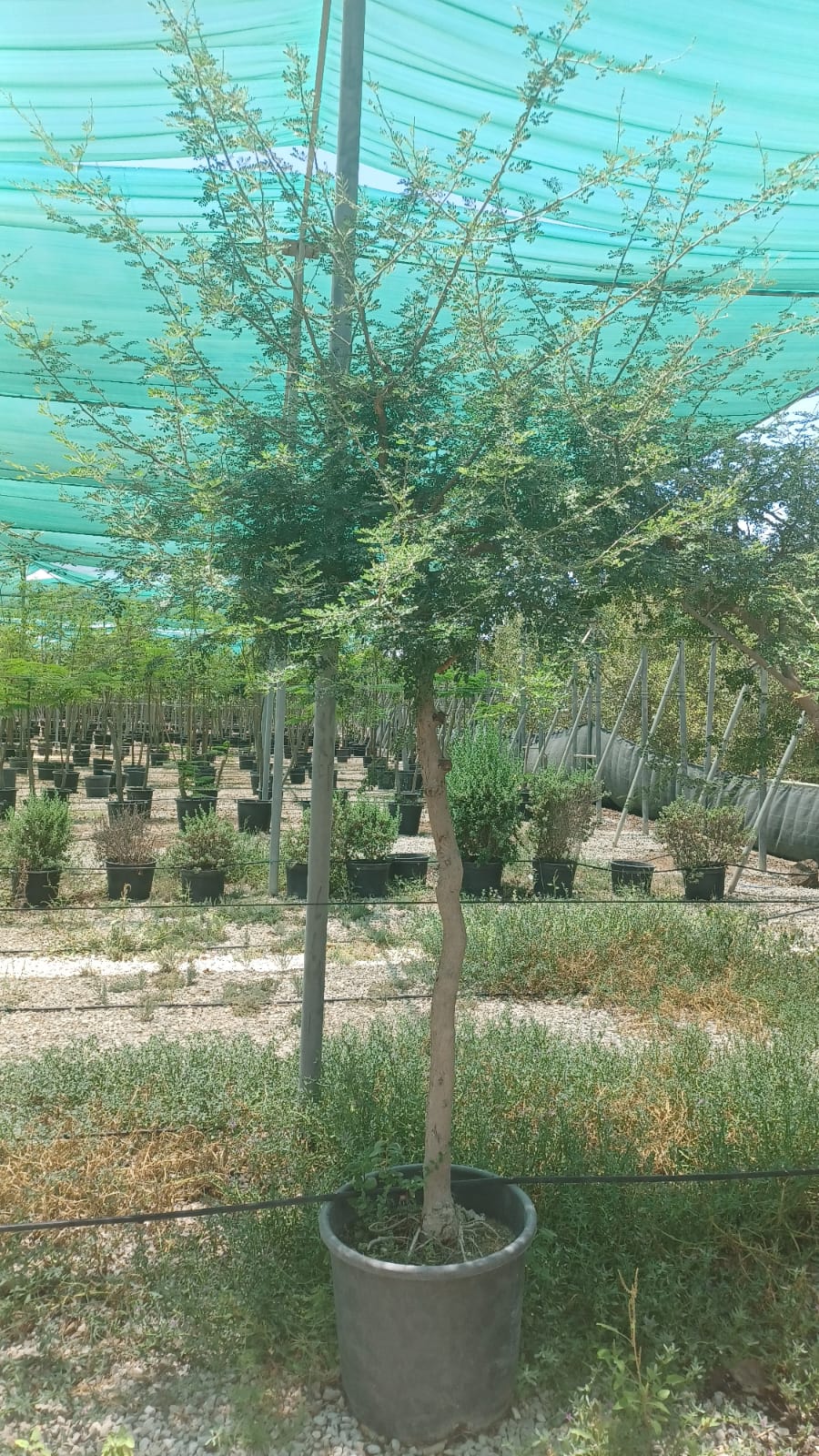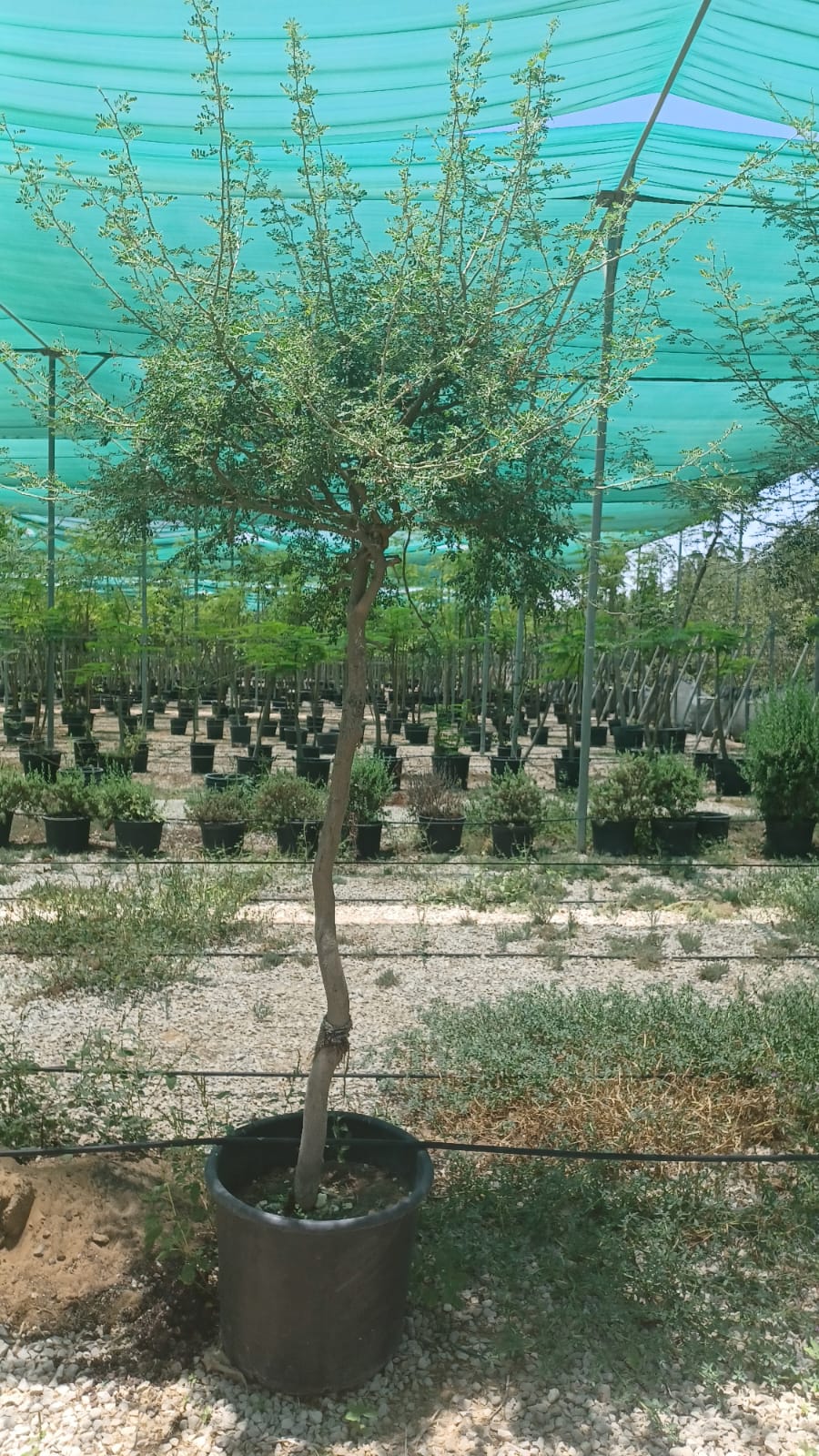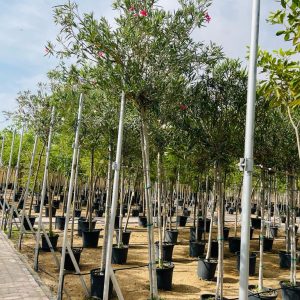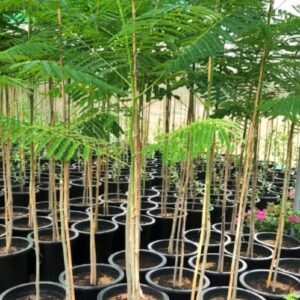Ghaf Tree Cultural Heritage Size: 1.80M to 2M
Ghaf Tree (Prosopis cineraria) scientifically known as Prosopis cineraria, thrives in arid and desert environments and exhibits fascinating resilience. It is native to regions such as the Middle East and South Asia and has a remarkable ability to survive in sandy and rocky soils with limited water availability.
Ghaf Tree Cultural Heritage Appearance:
The Ghaf Tree (Prosopis cineraria) has a unique appearance, with a dense and umbrella-shaped canopy. Its branches often twist and turn, adding to its distinctive charm. The tree’s foliage consists of small, compound leaves that provide shade and help reduce water loss through transpiration.
When it comes to caring for a Ghaf Tree, here are some essential tips:
Ghaf Tree Cultural Heritage Planting:
Select a suitable location with well-draining soil. Ensure the tree receives ample sunlight as it thrives in full sun exposure.
Ghaf Tree Cultural Heritage Watering:
Ghaf Trees are drought-tolerant once established. During the initial establishment period, regular watering is necessary to promote root development. After that, they can survive with minimal watering, relying on natural rainfall.
Ghaf Tree Cultural Heritage Mulching:
Apply a layer of organic mulch around the base of the tree to help retain soil moisture and suppress weed growth. This is especially beneficial during the early stages of growth.
Pruning:
Pruning is generally not required for Ghaf Trees, as they naturally maintain a desirable shape. However, if needed, prune any dead or damaged branches to maintain the tree’s health and aesthetic appeal.
Protection:
Provide protection from strong winds and frost, especially during the early stages of growth, as young trees may be more vulnerable to damage.
Conservation:
Due to its ecological and cultural significance, the Ghaf Tree is being conserved and protected in various regions. Support conservation efforts and avoid any actions that may harm or disturb these trees in their natural habitats.
By following these care tips, you can help ensure the health and vitality of the Ghaf Tree and enjoy its beauty and resilience in your landscape.
Ghaf Tree Cultural Heritage Ghaf Tree, or Prosopis cineraria, is a species of flowering plant native to the Middle East and Central Asia. It is most common in the United Arab Emirates, where it is the national tree. The Ghaf tree is a hardy species, capable of surviving in harsh conditions and is resistant to drought. It is a medium to large evergreen tree that can reach heights of up to 20 meters, with distinctive grey bark and pinnate leaves.
Ghaf Tree (Prosopis cineraria) scientifically known as Prosopis cineraria, thrives in arid and desert environments and exhibits fascinating resilience. It is native to regions such as the Middle East and South Asia and has a remarkable ability to survive in sandy and rocky soils with limited water availability.
The Ghaf Tree (Prosopis cineraria) has a unique appearance, with a dense and umbrella-shaped canopy. Its branches often twist and turn, adding to its distinctive charm. The tree’s foliage consists of small, compound leaves that provide shade and help reduce water loss through transpiration.







Reviews
There are no reviews yet.